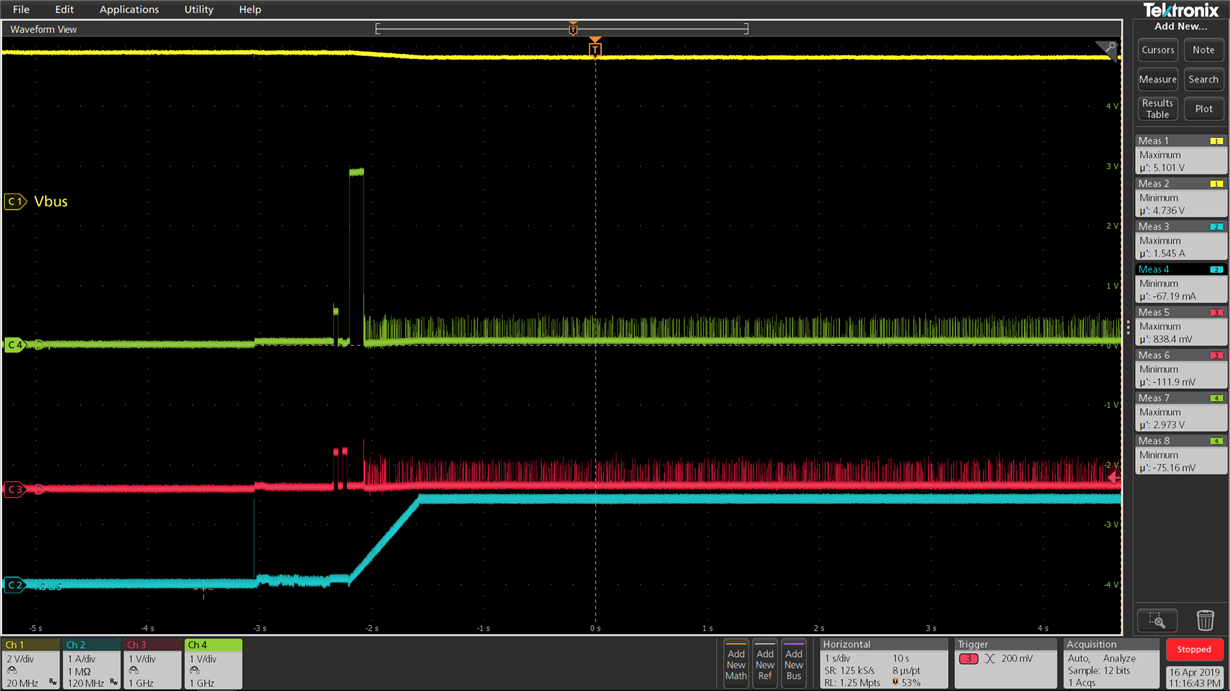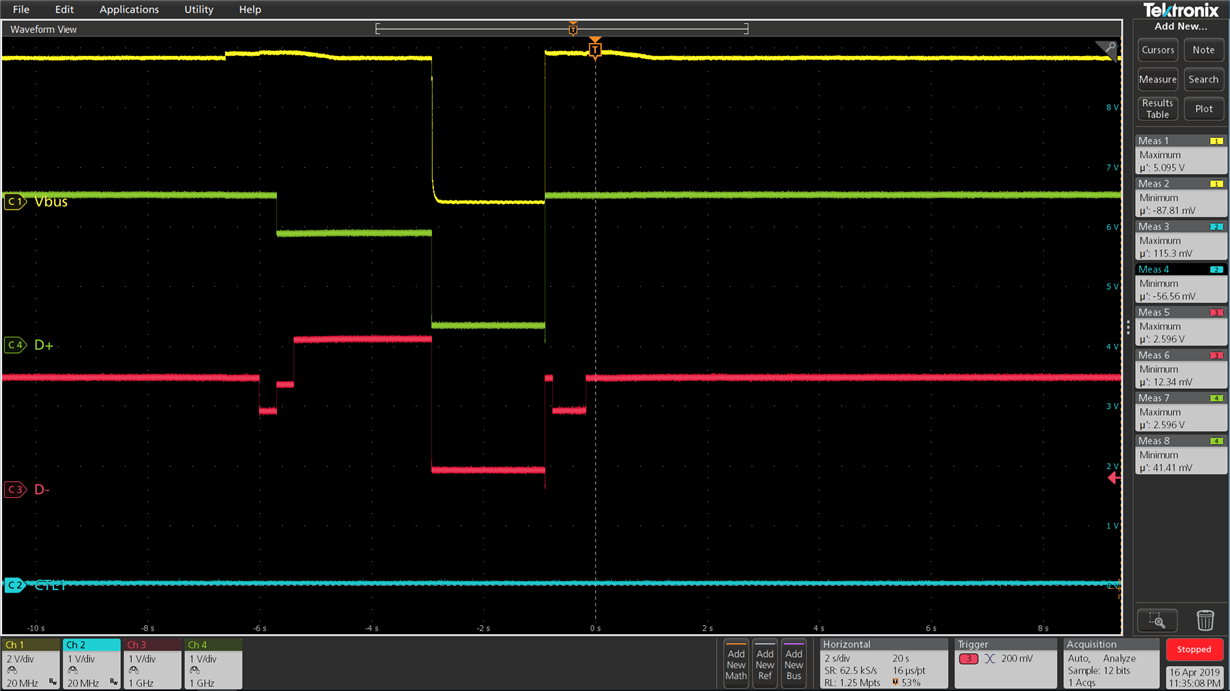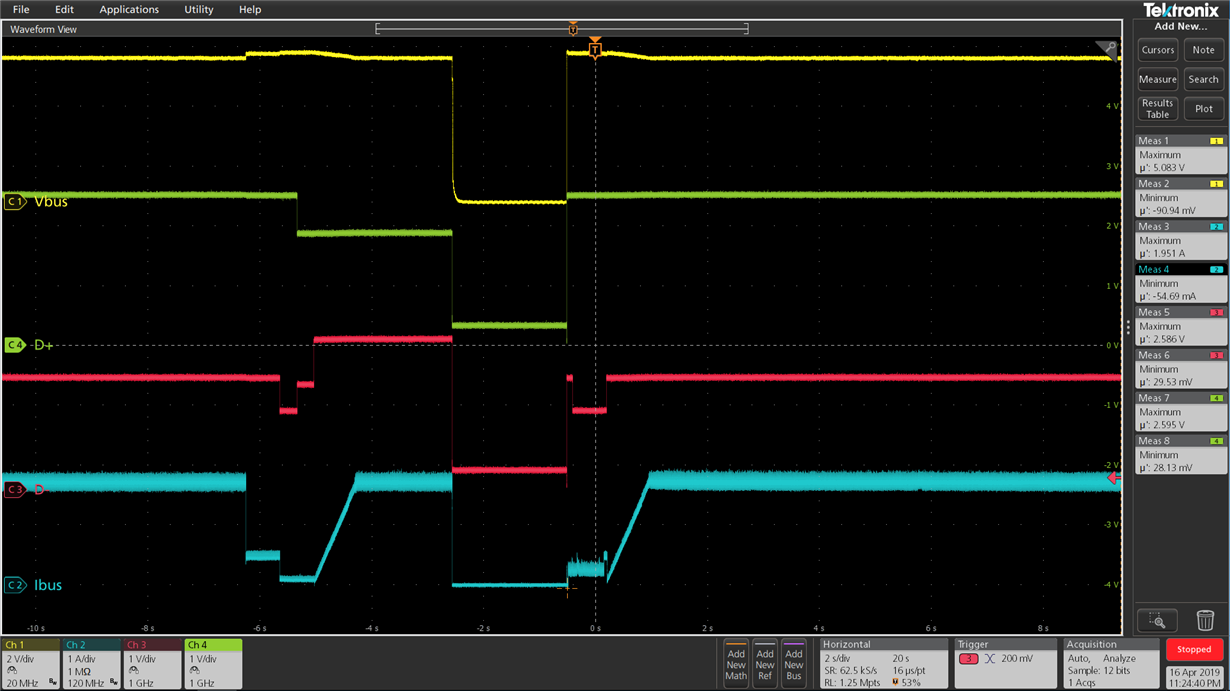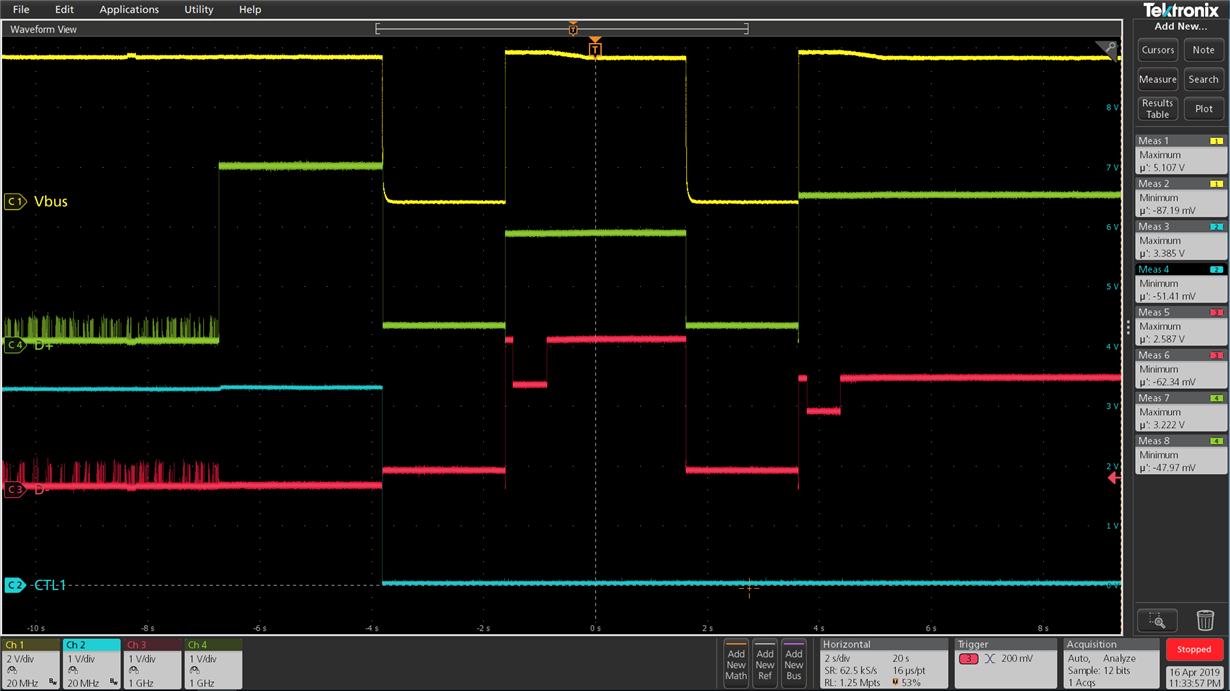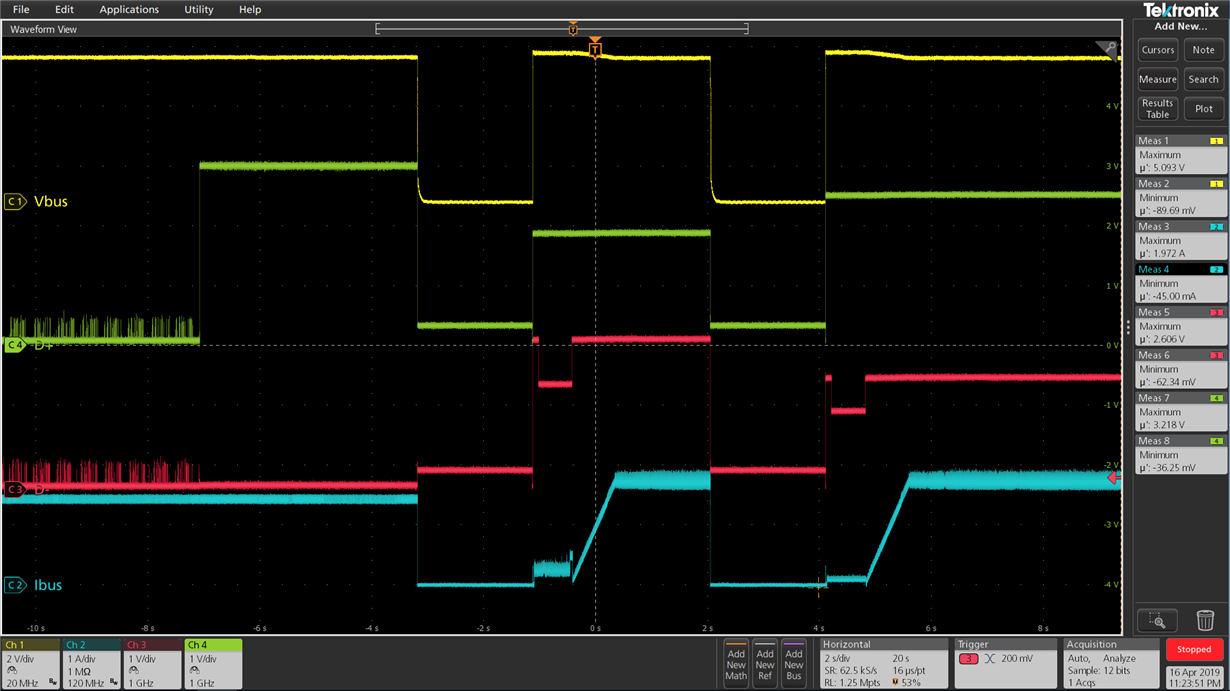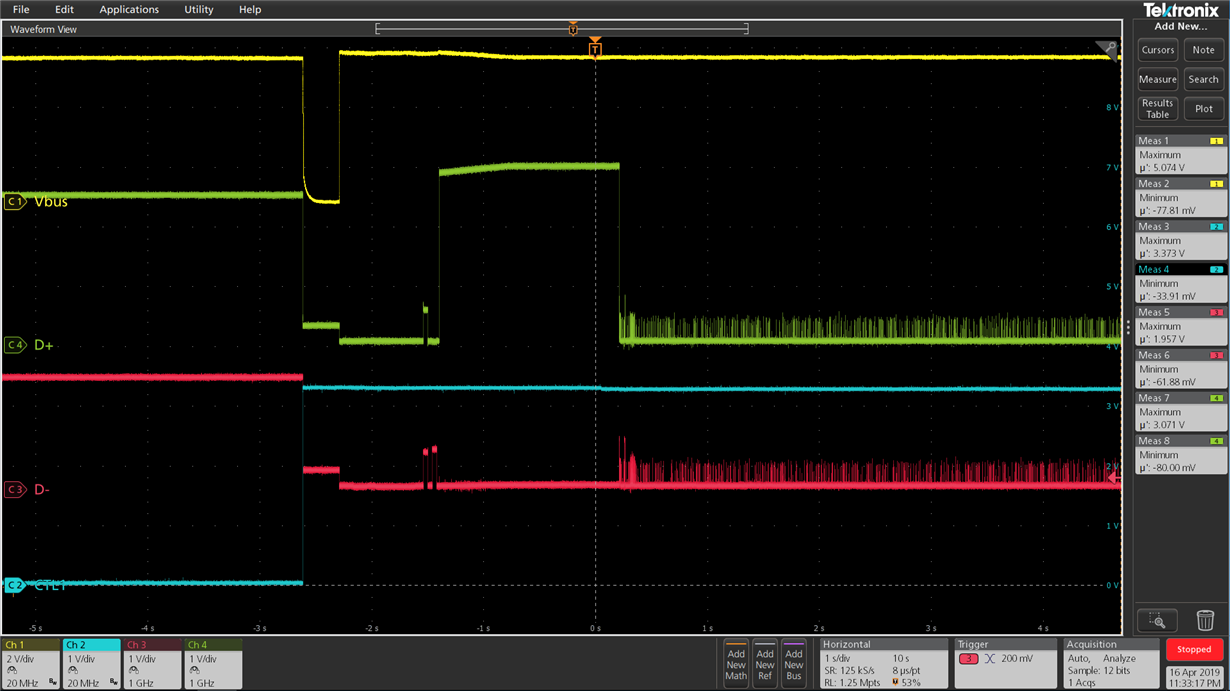Hi team,
Customer reported that they see Vbus discharge in the charging process in system S3 and S5 mode.
Noted that, in S3 and S5, TPS2547 under DCP/Auto mode. (And CDP in S0).
Please check the attached schematics and waveforms and help to confirm if this discharging is normal behavior?
The tested cell phone is with 50% capacity Xiaomi6 with Type-A to Type-C cable. Also need your help to explain what mode is in S3 and S5. It seems not DCP for me. And do you have related documents could share to me to help my learning?
Thanks for your help.
Max
S3&S5:


